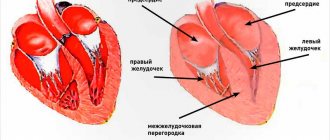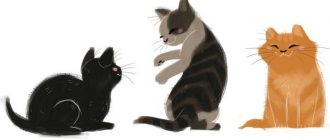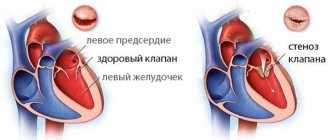Heart failure is the inability of the heart to pump the amount of blood the body needs. This disease occurs as a result of past infectious diseases. Heart failure is the most common cause of sudden death in pets. It affects not only dogs, but also cats.
Types of heart failure:
- Chronic heart failure. It develops slowly, sometimes imperceptibly, but at the same time, steadily.
- Acute heart failure develops quite rapidly, its time varying from several minutes to several hours.
As a result of the acute form, the cat instantly develops pulmonary edema, symptoms of which may include blood discharge from the mouth and nose, as well as shortness of breath.
Symptoms
Symptoms of heart disease in cats are not always visible, but she cannot complain about her health. Therefore, the health of the pet is entirely in the hands of the owner. He must monitor his pet and, upon discovering the first symptoms of the disease, should seek advice from a veterinarian.
A cat's panting with a protruding tongue is a sign of heart disease.
- Fatigue is difficult to notice in a cat, since it leads a generally quiet lifestyle.
- Dyspnea. Breathing occurs through the abdomen, without the participation of the chest.
- An attack accompanied by loss of consciousness. The cat, at this time, can be mistaken for a dead animal. Usually the attack passes quickly, but it happens that pets die, as their body experiences an acute lack of oxygen.
- The animal wheezes and meows terribly.
- Heavy breathing indicates pulmonary edema.
- Complete or partial paralysis of the hind legs.
- Cardiopalmus.
- Cyanosis of the gums.
- Loss of appetite.
In cats, coughing is not a cardiac symptom.
First aid for a cat who faints
The onset of an attack requires quick and correct actions by the owner, since, sometimes, it can end in death.
- Lay the cat down, and it is necessary to give her a side position of her head.
- Pull out your tongue.
- Place a cool compress on your head.
- Place cotton wool soaked in ammonia to your nose.
- The paws must be fixed higher than the head, so there will be more blood flow to the head.
- Call your veterinarian.
How to distinguish a healthy cat from a sick one
Since cats generally lead a calm lifestyle, they are couch potatoes, not all owners can distinguish a healthy animal from a sick one. She can report any changes in well-being by changing her behavior, that is, if the cat used to behave independently of the owner, but now does not leave him, then this indicates that something is bothering her.
Some people think that purring in cats is a sign of health. This is wrong. Purring, abruptly replaced by aggression or growling, indicates that she is in pain.
A healthy animal has:
- Smooth wool.
- The nose is wet and cold.
- The mucous membranes of the eyes are pinkish in color.
- The animal is vigorous and active.
Sick animal:
- Lethargic, lies more than usual.
- He tries to get away from everyone to a secluded place.
- Can be very excited.
- The meow is pitiful.
- Movements are clumsy.
- The nose is warm with cracks.
Structure and functions of the heart
The organ has a pronounced cone shape with a cut off apex. Venous trunks approach the heart, and the aorta and arteries depart from it, carrying oxygen-enriched blood throughout the body. Anatomically, the organ is divided into two atria and two ventricles.
The complex of the left atrium and ventricle is called the “arterial heart”. Only arterial blood passes through it. Accordingly, the right ventricle and atrium are called the “venous heart”, also based on the type of blood they pump. The heart cycle consists of two stages: contraction, i.e. systole and relaxation, diastole.
First, it enters the ventricles from the atria, and from there it goes into the arterial bed. The valve system is largely responsible for this. Normally, it does not allow blood to flow into its other chambers. First it enters the atria, from there into the ventricles, and then the heart rests for a split second. This process is called the “heartbeat cycle.”
Causes of heart failure
- Congenital heart pathologies. In cats they are quite rare, occurring in approximately 2% of all cases.
- Diseases of the heart muscle caused by infectious diseases.
- Cardiomyopathy, which is caused by an inadequate diet in cats. They, as a rule, do not receive enough taurine, which is part of raw fish and meat. During cooking, it is destroyed.
- Heartworms and their larvae are found in mosquitoes. They are microscopic in size. When a mosquito bites, their larvae enter the animal’s bloodstream and settle in the pulmonary artery. Heartworms can grow up to 30 centimeters in size. With their presence in the circulatory system, they interfere with the outflow of blood and cause enormous damage to the arteries. Adults entangle the heart, thereby interfering with its full functioning. Heartworms can be detected using a blood test.
- Age-related hormonal changes. Heart failure is thought to occur in cats over 6 years of age.
- Metabolic disease. Sometimes it is caused by improperly structured nutrition.
Cats should be periodically screened for heartworms to help prevent heart disease. If a taurine deficiency is noticed in a timely manner, it must be introduced into the cat’s food, due to which the vital activity of the heart muscle is restored.
Diagnostics
Diagnosis must be carried out by a qualified veterinary cardiologist in order to prescribe the correct treatment. Typically it includes:
- Blood analysis.
- Analysis of urine.
- Ultrasound.
- Chest X-ray.
- ECG.
If a cat has been diagnosed with heart failure, then it should be excluded from planning for breeding, since the hereditary factor plays an important role.
Where is the heart located in cats?
Traditionally for mammals, the cat's heart is covered with a kind of “protective grille” formed by the ribs and is located in a small space between the lungs.
However, due to the peculiarities of the structure (its larger part is somewhat shifted to the left side of the chest), it is generally accepted that the heart of cats is located on the left.
You will get a BIT if you don't like us ^^
And don't forget to tell your friends!
Login using
Cancel reply
And you are heartless among us, since you shout so much at night and rustle with packages!
no, no, also on the left. like everyone else
© milota.online 2021
Policy regarding the processing of personal data
1. General provisions This personal data processing policy is drawn up in accordance with the requirements of the Federal Law of July 27, 2006. No. 152-FZ “On Personal Data” and determines the procedure for processing personal data and measures to ensure the security of personal data of milota (hereinafter referred to as the Operator). The operator sets as its most important goal and condition for carrying out its activities the observance of the rights and freedoms of man and citizen when processing his personal data, including the protection of the rights to privacy, personal and family secrets. This Operator’s policy regarding the processing of personal data (hereinafter referred to as the Policy) applies to all information that the Operator can obtain about visitors to the website https://milota.online/.
Treatment and care
Treatment of cats for this disease depends on the severity of the disease. Sometimes it is carried out exclusively during a daily stay in a veterinary clinic. Cats do not undergo heart surgery. During illness, they are prescribed only drug treatment. The earlier they are diagnosed with heart failure, the better their chances of survival. For recovery you need:
- Complete rest of the animal. The pet must be limited from any stress - this could be a working vacuum cleaner, traveling on public transport or the arrival of guests.
- Treatment with diuretics removes excess fluid from the body. During illness, fluid can accumulate near the lungs, thereby causing swelling. In the chest, causing pleurisy. In the abdominal cavity, causing ascites. Reducing the amount of fluid in the body helps reduce the load on the heart.
- Treatment with ACE inhibitors, which reduce the load on the heart by increasing blood flow.
- Positive inotropes make the heart pump more blood, control the heartbeat, and slow it down so it pumps more blood into the body.
- When the fluid content in a cat’s body is greatly increased, the veterinarian will pump it out and thereby remove it from the body. The cat will feel relief for a while, but this will not last long, as the fluid will return. Pumping is carried out by inserting a sterile needle into the required place.
- Balanced diet.
Heart failure in an animal requires careful care:
- Cats need low-salt food. Salt retains water in the body, which leads to poor circulation.
- Feed with a high content of taurine and protein.
- Heart failure requires regular veterinary consultations and ongoing treatment.
Function and principle of action of the heart
The heart is an internal pump, a muscle that pumps blood, supplying the cat’s body with oxygen and nutrients and removing carbon dioxide from the organs. In this case, one side of the heart, the right, pumps blood only to the lungs. The left one pumps blood to the rest of the cat’s body organs.
Interesting information about cat blood. It turns out that the formula and composition of a cat’s blood does not correspond to any other animal. Blood clots very quickly and its reaction to some chemicals is unique (this point is still being studied). But that's not all. Scientists have found that the composition of the blood of each cat is different, just like that of humans. There is a certain system that divides blood into groups. This is all that the researchers have found out so far.
Then it is sent through the vessels throughout the body, and some of it seeps into the tissues and collects in the lymphatic system. In this system, the blood is purified by passing through the glands and receives a certain number of lymphocytes. And all this movement is driven by the heart pump. It’s worth getting acquainted with the structure of this pump and finding out what the structure of a cat’s heart is.
shutterstock
Prevention
Cats suffering from heart failure need preventative care to keep them active. We need to try to “stir up” animals that lead a “sofa” lifestyle. Obese cats are at risk for heart disease. You need to ensure your pet is eating properly. An annual checkup with a veterinarian will protect him from heart disease.
Sphynx, British, Persian, Scottish cats, and Maine Coons are also susceptible to heart disease. This does not mean that all cats of these breeds, sooner or later, have heart problems. This statement means that representatives of these breeds develop heart disease at an earlier age.
Heart failure in neutered cats is quite common because these animals are very lazy. They lead a sedentary lifestyle and are obese.
It is necessary to pay increased attention to neutered cats, as they are more susceptible to heart disease.
A diagnosis of heart failure in cats is not a death sentence. The main thing is to notice the first symptoms of the disease in time, carry out regular examination and treatment. Monitor your pet's diet. With proper care and care, a cat can delight its owner with affection and beauty for a long time.
Where is the cat's heart?
What is a cat's heart?
The physiology of all mammals, including cats, is such that this hollow organ consists of 4 parts: the upper two atria, left and right, and the lower ventricles, too, left and right.
The right side of the lung carries blood to the lungs, where it is oxygenated and returned to the heart, to the left side, which sends blood through the arteries to the organs. This is how you can briefly describe the circulatory system.
The anatomy of cats of different breeds may differ when it comes to the shape of the head or skeleton, the size of the tail or ears. But the location of the internal organs, including the heart, is the same.
Heart diseases
- Having examined for changes from the norm.
- Listen to the noises and sounds of the heart muscle.
For owners, their cat's weight gain can be a source of pride and a sign of their care. But the doctor knows how difficult it is for the heart to work if a cat develops various types of obesity. He will ask about the routine and inquire about feeding the cat.
By checking the pulse and how regular the heartbeat is, the intensity and characteristics of the heart murmur, the doctor will be able to draw a conclusion about the cat’s condition.
Where is the cat's heart?
What is a cat's heart?
The physiology of all mammals, including cats, is such that this hollow organ consists of 4 parts: the upper two atria, left and right, and the lower ventricles, too, left and right.
The right side of the lung carries blood to the lungs, where it is oxygenated and returned to the heart, to the left side, which sends blood through the arteries to the organs. This is how you can briefly describe the circulatory system.
The anatomy of cats of different breeds may differ when it comes to the shape of the head or skeleton, the size of the tail or ears. But the location of the internal organs, including the heart, is the same.
Heart diseases
- Having examined for changes from the norm.
- Listen to the noises and sounds of the heart muscle.
For owners, their cat's weight gain can be a source of pride and a sign of their care. But the doctor knows how difficult it is for the heart to work if a cat develops various types of obesity. He will ask about the routine and inquire about feeding the cat.
By checking the pulse and how regular the heartbeat is, the intensity and characteristics of the heart murmur, the doctor will be able to draw a conclusion about the cat’s condition. And then she will determine whether she needs help. And, if necessary, then what kind.
A bite that looks like a cute street guy.
Many people who have only recently...
Cats are very clean animals.
The process of training a kitten depends.
Add a comment Cancel reply
- Oksana on How to understand that a cat is dying
- Natalya on How birth occurs in sphinxes
- Aizilya on the post The cat's eye is watering, what to do at home
- Veronika Chirkova on How to understand that a cat is dying
- Lyudmila on How to understand that a cat is dying
Or save the link for yourself so as not to lose










